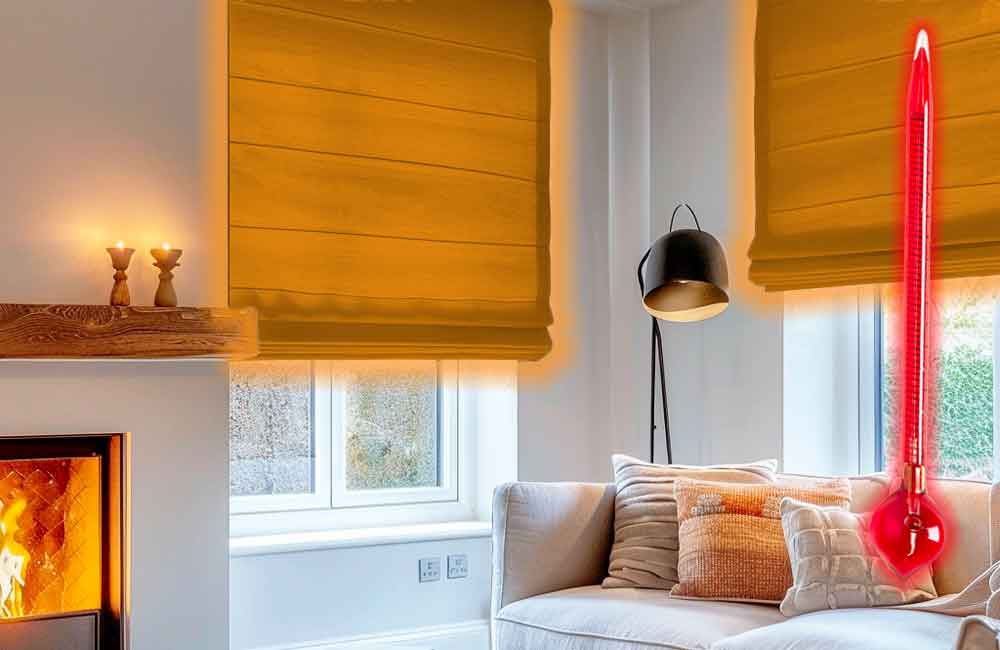Measuring & Fitting Included
Get an immediate price using our online estimator
Years’ of experience
Daytime, evening & weekend appointments
Call to speak to our call centre

In today’s world of rising energy costs and environmental awareness, finding ways to reduce home energy usage has become crucial. One often overlooked but effective method is utilizing blinds. These versatile window coverings not only enhance the ambiance of a room but also play a significant role in controlling the amount of heat and light that enters your home. In this article, we will explore practical tips on how to reduce home energy usage with blinds.
Why Blinds Matter
Blinds are more than just decorative window treatments. They act as a barrier between your home’s interior and the outside elements, helping to regulate temperature and manage natural lighting. By properly selecting and using blinds, homeowners can significantly reduce their reliance on artificial cooling and heating systems, resulting in energy savings and lower utility bills.
When it comes to energy efficiency, not all blinds are created equal. To maximize the benefits, it’s essential to choose the right type of blinds for your specific needs. Here are a few options to consider:
Cellular or Honeycomb Blinds: These blinds are designed with unique pockets that trap air, acting as an insulating layer. This innovative design helps to reduce heat transfer through your windows, keeping your home cooler in summer and warmer in winter. Cellular blinds are available in single, double, or triple cell configurations, with each offering varying levels of insulation.
Roller Blinds with Reflective Backing: Roller blinds equipped with a reflective backing can effectively reflect sunlight and heat away from your home. These blinds are particularly beneficial in areas with intense sunlight or hot climates, as they prevent the sun’s rays from penetrating and heating up your living space.
Wooden or Bamboo Blinds: Natural materials such as wood and bamboo can add a touch of elegance to your home while also providing insulation. These blinds create an additional layer of air between the window and the interior, helping to regulate temperature. Additionally, wooden blinds have the advantage of being adjustable, allowing you to control the amount of light and heat entering your home.
Once you’ve chosen the right blinds, it’s crucial to use them effectively to maximize energy savings. Here are some practical tips for proper blinds usage:
During the day, open your blinds to allow natural light to illuminate your home. This reduces the need for artificial lighting, saving electricity. However, be mindful of the sun’s position and intensity. Close the blinds partially or fully when the sun is at its peak to prevent excessive heat gain, especially in rooms facing south or west.
Utilize the insulating properties of your blinds to maintain comfortable indoor temperatures. Close the blinds at night to prevent heat loss during colder months, and open them during the day to let the sunlight warm your home. This simple adjustment can significantly reduce your reliance on heating and cooling systems.
Ensure your blinds are installed correctly to maximize their energy-saving potential. Improperly installed blinds may leave gaps where air and light can penetrate, reducing their effectiveness. Proper installation ensures a snug fit, minimizing heat transfer and maximizing insulation.
Automated blinds equipped with light and temperature sensors offer convenience and energy efficiency. These blinds can adjust themselves based on the amount of sunlight and temperature, effectively managing heat gain and loss throughout the day. Investing in automated blinds can lead to significant energy savings in the long run.

In addition to using blinds effectively, there are other measures you can take to further reduce your home’s energy usage. Consider implementing the following practices:
Seal Windows and Doors: Properly seal any gaps or cracks around windows and doors to prevent drafts and heat loss. Weather stripping and caulking are cost-effective methods for enhancing energy efficiency.
Utilize Natural Ventilation: Take advantage of natural ventilation by opening windows strategically to allow for cross breezes. This helps to cool your home without relying heavily on air conditioning.
Upgrade to Energy-Efficient Windows: If your budget allows, consider upgrading to energy-efficient windows. These windows are specially designed to minimize heat transfer, keeping your home comfortable and reducing energy consumption.
Use Energy-Efficient Light Bulbs: Replace traditional incandescent light bulbs with energy-efficient alternatives such as LEDs or CFLs. These bulbs consume significantly less energy and last much longer.
By combining these energy-saving practices with proper blind usage, you can make a substantial difference in reducing your home’s energy usage and achieving long-term cost savings.
In conclusion, blinds are a practical and stylish solution for reducing home energy usage. By selecting the right blinds, using them effectively, and implementing additional energy-efficient practices, homeowners can create a comfortable living space while minimizing their environmental impact and utility expenses.
Blinds act as a barrier between the interior of your home and the outside elements, helping to regulate temperature and manage natural lighting. By using blinds effectively, homeowners can reduce their reliance on artificial cooling and heating systems, resulting in energy savings and lower utility bills.
Here are some practical tips for proper blinds usage:
In addition to using blinds effectively, here are some other measures you can take to further reduce home energy usage:
In conclusion, by selecting the right blinds, using them effectively, and implementing additional energy-efficient practices, homeowners can reduce their home’s energy usage, minimize their environmental impact, and achieve long-term cost savings.

With a keen eye for design Natalie is the Blinds Design Specialist at Custom Fitted Blinds. Dedicated to creating personalised solutions, she transforms spaces with creativity and expertise.
© 2024 All rights reserved
Made with ❤ with Elementor